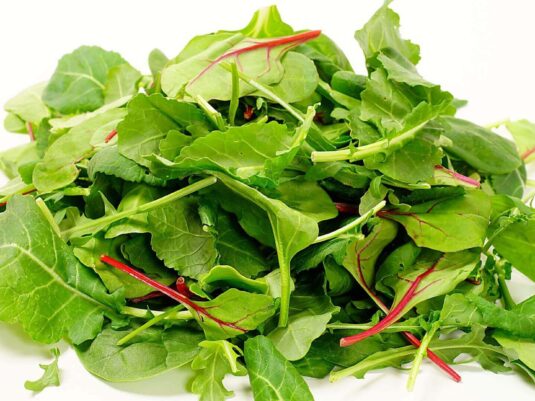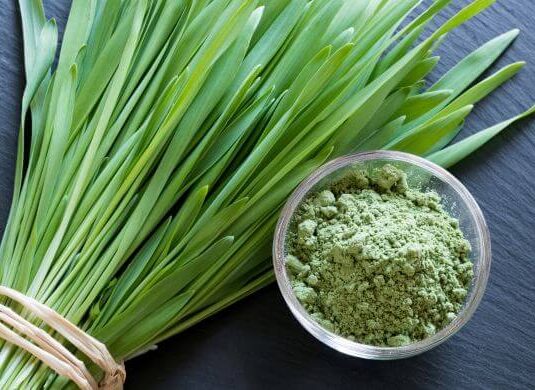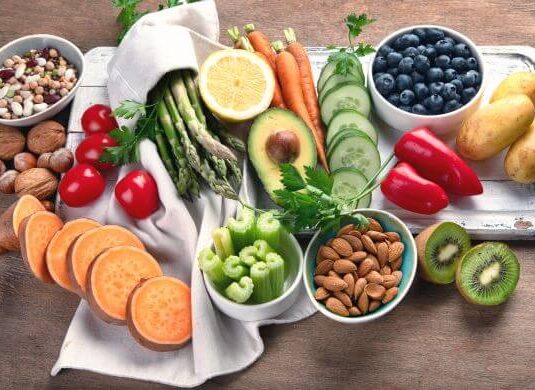
Understanding Green Foods
1. What are “green foods”?
Green foods primarily refer to leafy greens, vegetables, and certain algae that are packed with vital nutrients such as vitamins, minerals, and antioxidants.
2. Why are leafy greens considered nutritional powerhouses?
Leafy greens are dense in vitamins like A, C, K, and folate, minerals like calcium and potassium, fiber, and antioxidants. They offer numerous health benefits with relatively few calories.
3. How do greens help in detoxification?
Greens, especially cruciferous veggies like kale and broccoli, contain compounds that support liver function and help the body detoxify.
4. What are the top sources of plant-based iron?
Spinach, kale, Swiss chard, collard greens, and spirulina are all excellent green sources of non-heme iron.
5. Are frozen greens as nutritious as fresh ones?
Yes, frozen greens are often flash-frozen soon after harvesting, preserving their nutrient content. Sometimes, they might even have more nutrients than greens that have been stored fresh for a long time.
6. How does chlorophyll in greens benefit our health?
Chlorophyll has antioxidant properties, promotes wound healing, and can help detoxify the body. It’s also said to help control body odor.
7. What are the best ways to store greens to retain their nutrition?
Store them in the refrigerator inside airtight containers or bags, preferably with a paper towel to absorb excess moisture, ensuring they remain crisp and fresh.
8. Is it safe to consume raw greens?
While many greens are safe and nutritious to consume raw, it’s essential to wash them thoroughly to remove any dirt or pesticides. Some greens, like kale, may be easier to digest when slightly cooked.
9. Why is spirulina considered a superfood?
Spirulina is a blue-green algae rich in protein, vitamins, minerals, and antioxidants. It boosts the immune system, has anti-inflammatory properties, and aids detoxification.
10. How often should I eat green foods for optimal health?
Aim for at least one serving of leafy greens daily. However, the more you can incorporate into your diet, the better, as long as you maintain variety and balance.
Green Food Preparation & Consumption
11. Can green smoothies replace meals?
While green smoothies can be nutrient-dense, they should not consistently replace whole meals. They can, however, serve as a supplement or a snack.
12. What’s the difference between kale and spinach in terms of nutrition?
Both are nutritious, but kale has more calcium and vitamin C, while spinach is richer in folate and iron.
13. How can I make my green juices tastier?
Mixing them with fruits like apples, pineapples, or berries can add natural sweetness and enhance flavor.
14. Do organic greens offer more nutrition?
Organic greens might not always have more nutrients, but they are grown without synthetic pesticides and herbicides, which many prefer to avoid.
15. Is juicing greens as beneficial as eating them whole?
Juicing removes fiber, which is essential for digestive health. While juices offer concentrated nutrients, it’s best to consume greens in both juiced and whole forms.
16. Are there any risks associated with consuming too many greens?
While greens are healthy, excessive consumption, especially of specific types like kale or spinach, can lead to issues like kidney stones or imbalanced nutrient levels.
17. Can I get enough protein from greens?
While greens contain protein, they shouldn’t be your primary source. Complement them with other protein sources like legumes, grains, and seeds.
18. What are phytonutrients, and why are they essential?
Phytonutrients are compounds in plants that have health-promoting properties, including antioxidant, anti-inflammatory, and liver-health-promoting actions.
19. Why are fermented green foods beneficial?
Fermented greens enhance gut health by introducing beneficial bacteria and aiding nutrient absorption.
20. Do I need supplements if I consume enough greens?
A varied and balanced diet with plenty of greens often reduces the need for supplements, but individual needs vary based on health conditions, age, and other factors.
21. Are there any risks in combining various green foods in a meal?
Generally, combining green foods is safe and nutritious, but it’s essential to listen to your body and any discomfort like bloating or digestion issues.
22. How do green foods impact energy levels?
Greens can increase energy levels due to their rich nutrient content, especially iron and B-vitamins which aid in oxygen transport and energy production.
23. Why do certain greens cause bloating?
Some people might find certain greens harder to digest, leading to gas and bloating. Cooking or fermenting can often alleviate this.
24. How do green foods influence weight loss?
Being low in calories and high in nutrients and fiber, green foods can promote satiety, reduce overall calorie intake, and support metabolism, aiding weight loss.
25. Can children and seniors benefit from green foods?
Absolutely! Greens are beneficial for all age groups, offering essential nutrients that support growth in children and health maintenance in seniors.
26. How do greens support immune function?
Greens are rich in vitamins, minerals, and antioxidants that bolster the immune system, making it more efficient in warding off infections.
27. Why is magnesium in greens important?
Magnesium is vital for muscle function, nerve function, energy production, and helps maintain normal heart rhythm. Leafy greens are a good source of this essential mineral.
28. Is there a difference in nutrition between green and purple kale?
While both types are nutritious, purple kale has anthocyanins – antioxidants responsible for its color – which offer additional health benefits.
29. Why is watercress considered a superfood?
Watercress is nutrient-dense, particularly in vitamins A, C, and K, and has compounds believed to have anti-cancer properties.
30. Are there benefits to consuming raw vs. cooked greens?
Raw greens retain enzymes and certain nutrients that can be lost with cooking. However, cooking can make some nutrients more bioavailable and digestible.
31. What is the best way to clean greens?
Soaking greens in cold water, then rinsing them can help remove dirt and some pesticides. For added assurance, a vinegar-water solution can also be used.
32. Do green foods help with digestion?
Yes, the fiber in greens promotes regular bowel movements, and certain greens, like fennel, have compounds that soothe the digestive tract.
33. How can greens support heart health?
Greens, like spinach, are rich in potassium, which can help regulate blood pressure. They also contain antioxidants and dietary fiber, which support overall heart health.
34. What are the benefits of green tea consumption?
Green tea is rich in antioxidants, can boost metabolic rate, supports brain health, and may reduce the risk of certain chronic diseases.
35. Why is chlorella considered beneficial?
Chlorella is a green algae known for its detoxifying properties, especially for heavy metals. It’s also a nutritious source of protein, vitamins, and minerals.
36. Can consuming too many greens lead to kidney stones?
Certain greens, like spinach, are high in oxalates, which in excess can contribute to kidney stones in susceptible individuals.
37. Are greens good for skin health?
Yes, the vitamins and antioxidants in greens can promote a healthy complexion, combat aging, and support skin repair.
38. How do greens promote bone health?
Leafy greens are a good source of vitamin K, which plays a key role in bone mineralization and maintaining bone density.
39. What are microgreens, and how do they compare nutritionally to mature greens?
Microgreens are young, edible plants harvested just after the first true leaves develop. They can be more concentrated in nutrients and antioxidants compared to their mature counterparts.
40. Are green supplements effective for those who don’t eat enough greens?
While supplements can help bridge nutrient gaps, they shouldn’t replace whole foods entirely. It’s best to consume real greens for the full array of benefits they provide.
41. How do greens combat oxidative stress?
Greens contain antioxidants that neutralize free radicals, thereby reducing oxidative stress which is linked to chronic diseases and aging.
42. What makes Swiss chard unique among leafy greens?
Swiss chard is known for its colorful stems and high content of vitamins A, C, and K. It’s also a good source of magnesium, potassium, and iron.
43. How do greens support eye health?
Greens like kale and spinach are rich in lutein and zeaxanthin, antioxidants that help protect the eyes from harmful light and oxidative stress.
44. Is lettuce low in nutrition compared to other greens?
While lettuce, especially iceberg, might have lower nutrient densities compared to greens like kale or spinach, it still provides valuable nutrients and hydration.
45. Why are beet greens often overlooked, and are they nutritious?
While beet roots get more attention, their greens are highly nutritious, offering vitamins A, C, K, and minerals like potassium and magnesium.
46. How do green foods help regulate blood sugar?
The fiber and phytonutrients in greens can help stabilize blood sugar levels, making them beneficial for those with or at risk for diabetes.
47. Are there any green foods beneficial for brain health?
Leafy greens are beneficial for brain health, thanks to their antioxidant and anti-inflammatory properties. Foods like broccoli are also rich in choline, a nutrient vital for brain function.
48. What’s the role of greens in an alkaline diet?
Many greens are alkaline-forming in the body, which can help balance the body’s pH, especially if one’s diet is high in acidic foods.
49. Can I grow my own greens indoors?
Yes, many greens like lettuce, kale, and herbs can be grown indoors given the right conditions and adequate light, providing a fresh and local source of nutrition.
50. How can I reduce the bitter taste of some greens?
Blanching or sautéing with garlic, onions, or a splash of lemon juice can help neutralize the bitter taste in greens like arugula or mustard greens.




